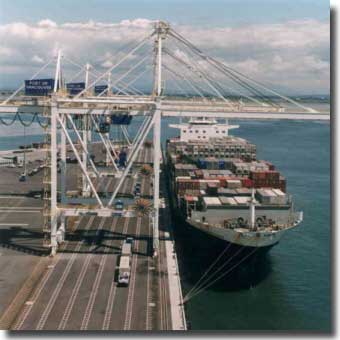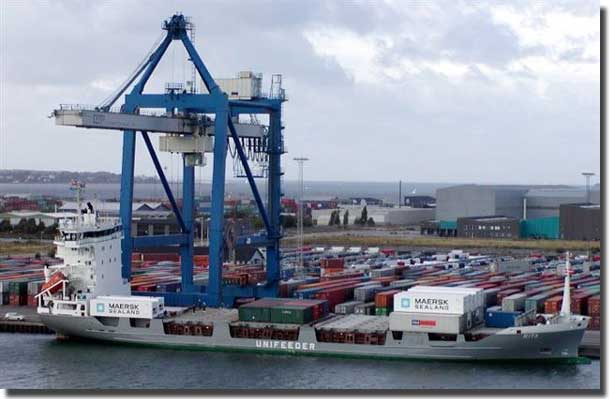|
The World of the Container Ship
Introduction.
A large container ship in port. Photo by courtesy Port of Vancouver .
In the Beginning. The container ship. In size, this massive container ship is only out muscled by the bigger crude oil carriers. These ships carry a minimum of crew members, and measure their port stays in hours, rather than the days needed to unload the old cargo ships, now replaced.
Hapag-LLoyd's large Container ship Colombo Express, can lift 8,749 20 foot containers in a single shipment. Loading and unloading container ships. Two categories of Container ship. 1. The huge main line ships that sail the world's major trade routes to the hub ports such as Singapore and Hong Kong. 2. The smaller "FEEDER" container ships that will ferry containers to and from the hub ports.
A "FEEDER" container ship loading at Copenhagen Denmark. At the moment, Port Phillip Bay which has to traversed for container ships to reach the Port of Melbourne, needs its main shipping channels to be deepened, to allow the largest ships of this type who will have entered the narrow Heads which guard the entrance to this vast expanse of water, to sail up to the discharging docks. The Victorian Government is planning to run a test dredge, and there is hot debate from the Green Environment Lobby, that such a move will destroy the delicate balance of the Marine life living within Port Phillip Bay. On the other side of the coin are those whose argue our economy needs to accommodate the shipping lines who run these larger container vessels, and the commercial interests who use their services. If containers from Europe need to off loaded at Singapore into smaller container ships for delivery to Melbourne, rather than a direct delivery, then extra costs will entail, and something like at least 10 extra days will be added to the time required. It is my belief, that in this case, the economic argument is likely to win the day. Conclusion. This newer technology of containers and the ships to carry them has changed the way we ship goods from one side of the world to the other. |



